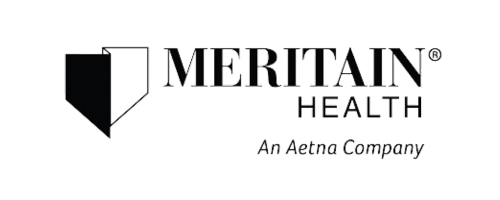Imagine feeling a heavy weight of depression and also experiencing a disconnect from reality because of hallucinations or delusions. This is what people with psychotic depression endure. It is a severe condition that combines the intense sadness and hopelessness of depression with psychotic symptoms.
Understanding “depression with psychotic features icd 10” is important for both diagnosis and treatment. IDC-10, the International Classification of Diseases, Tenth Revision, is a medical classification system used worldwide to categorize health conditions. Knowing the ICD-10 code for psychotic depression helps healthcare professionals with precise care.
In this article, we will explore what depression with the psychotic feature is and how it is different from other forms of depression. We will also cover the signs to look out for, and the reasons behind this condition.
Depression with Psychotic Feature ICD-10
The ICD-10 is a globally recognized system used by healthcare professionals to classify and code all health conditions. It helps organize and standardize medical diagnosis, making it easier for doctors to communicate and understand various health issues worldwide.
Specific ICD-10 Code for Depression with Psychotic Feature
In the ICD-10 system, depression with psychotic features is classified under the code F32.3. This code specifically identifies major depressive disorder with psychotic symptoms. Having this specific code helps doctors quickly identify and document this severe form of depression.
How This Classification Helps in Diagnosis and Treatment
This will enable accurate ICD10 coding to be used for depression with psychotic features, (F32.3) in order to facilitate a proper diagnosis and effective treatment planning. This facilitates accurate diagnosis and effective treatment plans for the following reasons:
- Diagnose Accurately: The use of a standard code enables physicians to quickly ascertain the exact form of a patient’s condition, differentiating it from other types of depression.
- Plan Effective Treatment: Once there is a clear diagnosis, healthcare providers can come up with treatment plans that approach both depressive and psychotic symptoms as one issue.
- Communicate Clearly: In addition, ICD-10 codes are essential in maintaining patient care coordination among different medical practitioners when a person requires visits to many specialists.
- Track and Study: By using widely accepted codes, the prevalence of disorders can be monitored globally while the effectiveness or otherwise of various treatments can be examined.
Understanding “depression with psychotic features ICD-10” helps in ensuring that individuals get the right diagnosis and required assistance, which increases their chances of recovering and living well.
Signs Of Psychotic Depression
Psychotic depression is a severe depression accompanied by psychosis; it is also called major depressive disorder with psychotic features. There are some symptoms of this condition:
- Depressive Symptoms: Continuous feelings of sadness, despair, and uselessness. These include loss of interest in formerly pleasurable activities, changes in appetite and sleep patterns and also fatigue.
- Psychotic Symptoms: Hallucinations (seeing or hearing things that aren’t there) and delusions (strongly held false beliefs that are not based on reality).
Behavioral And Emotional Cues
Persons suffering from psychotic depression may show different behavioral and emotional cues such as:
- Social Withdrawal: They will avoid social interactions by themselves with family members and friends.
- Agitation or Restlessness: Feeling unusually irritable or restless without clear cause many times.
- Impaired Functioning: Difficulty performing everyday tasks, keeping a job, or taking care of oneself.
- Paranoia: Thinking others have bad intentions towards them, which leads to suspicion and defensive actions.
How These Signs Differ From Other Forms Of Depression
The presence of psychotic features makes psychotic depression more serious than other forms of the illness. Here are some factors separating them.
- More Serious: Clearly, the depressive symptoms are much more severe and crippling.
- Reality Disruption: While typical depression is not associated with delusions or hallucinations, these features are common in psychotic depression.
- Danger of Harm: This is due to a combination of severe dejection and psychosis, increasing the likelihood of self-infliction or suicide.
Early detection of psychotic depression can assist people in seeking treatment timely and appropriately, which can improve outcomes significantly for affected patients.
What are Psychotic Features?
Psychotic symptoms refer to indicators of the loss of contact with reality. These symptoms involve hallucinations and delusions, which profoundly distort a person’s perception of the world around them.
Categories of Psychotic Features
- Psychotic features in depression generally fall into two classes:
- Hallucinations: These are false sensory experiences that seem real to the person experiencing them. They can affect any sense organ but are most often auditory (hearing voices or sounds that do not exist).
- Delusions: These are strong, false ideas that do not change even when disproven through evidence. Commonly held delusions in psychotic depression include beliefs about worthlessness, guilt, or persecution.
How These Features Express Themselves in Depressed Individuals
When depressed people are having psychotic symptoms, these signs merge with their depressive state as follows:
- Depressed Hallucinations: A patient may for example keep on hearing voices that would either go ahead to confirm their thoughts on depression or instruct them to commit suicide.
- Depressed Delusions: Often guilty feelings are part of delusion; inferiority and persecution reinforce hopelessness and a despairing attitude.
- Impact on Behavior: When an individual experiences extreme depression alongside psychopathology, one may become anti-social, incapacitated, and even tend to self–harm in the most dangerous of times. Differentiation.
A correct grasp of these psychotic features is absolutely necessary for accurate diagnosis and effective treatment of psychotic depression which requires a different approach from nonpsychotic depression.
How Is Psychotic Depression Different From Major or Clinical Nonpsychotic Depression?
Psychotic depression, commonly known as a major depressive disorder with psychotic features differs greatly from nonpsychotic major depression; the chief difference here is that it is marked by psychosis such as hallucinations and delusions. These symptoms are not found in nonpsychotic depression.
Comparison of Symptoms, Severity, and Treatment
Symptom
- Psychotic Depression: Typical depressive symptoms plus hallucinations (e.g., hearing voices) and delusions (e.g., false beliefs of guilt or persecution).
- Nonpsychotic Depression: Severe signs of depression with no loss of contact with reality.
Severity
- Psychotic Depression: This is more severe because there are additional psychotic symptoms that make it more intense and disabling.
- Nonpsychotic Depression: Serious and potentially debilitating, but typically less extreme than psychotic depression.
Treatment:
- Psychotic Depression: A combination of antidepressants, antipsychotics, and electroconvulsive therapy (ECT) may be needed.
- Non-psychotic depression: Antidepressants, psychotherapy, or a combo of both are used in its treatment.
Daily Life Influences
- Psychotic depression: substantially hampers day-to-day activities, self-care, work, and social interactions. Psychotic symptoms can lead to dangerous behaviors.
- Nonpsychotic depression: impacts daily life, but the patients might still be functional to some extent thus it is more manageable than psychotic depression.
Fully grasping these differences is crucial for appropriate care and support, which calls for more complex treatments in case of psychotic depression.
What are the Reasons Behind Psychotic Depression?
Psychotic depression is a type of severe depressive disorder that includes psychosis that might happen due to genetic biological or environmental factors.
Potential Causes and Risk Factors
- Genetics: A family history of mental illness such as depression increases the risk level
- Brain Chemistry: Dysregulated neurotransmitters like serotonin, dopamine as well as norepinephrine contribute to both conditions.
- Environmental Factors: The condition can also result from chronic or repeated traumatic events, and significant life changes such as death or divorce.
Stress and Trauma as Contributing Factors
- Stress: High levels of stress from work, relationships, or other sources can lead to psychotic depression.
- Trauma: Early life trauma increases vulnerability by impacting brain chemistry and emotional health.
Understanding these causes helps in developing effective treatments for psychotic depression.
Conclusion
Depression with psychotic features is a severe and complex condition that combines the overwhelming sadness of major depression with the distressing symptoms of psychosis. Understanding “depression with psychotic features ICD-10” is crucial for accurate diagnosis and effective treatment. By recognizing the signs, distinguishing them from other forms of depression, and understanding the underlying causes, we can better support those affected by this condition.
Early intervention and appropriate treatment are vital. If you or someone you know is struggling with psychotic depression, seek professional help immediately. Proper diagnosis and treatment can lead to significant improvement and a better quality of life.
Early diagnosis and treatment are essential. For more information and support, visit our website and connect with mental health professionals who can help guide you on the path to recovery at Calusa.
















